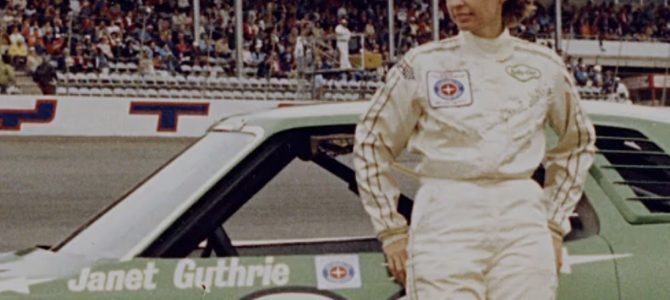
This past weekend, Danica Patrick drew attention when she moved from the racetrack to the broadcast booth, joining NBC Sports’ telecast of the Indianapolis 500 one year after she competed in the event for the last time. But as a new ESPN documentary explains, other females on track preceded Patrick’s rise to motorsports fame.
The documentary, appropriately entitled “Qualified,” chronicles the career of Janet Guthrie as she became the first female to compete in both the Indianapolis 500 and Daytona 500. As the film demonstrates, Guthrie capitalized on the opportunities she received to prove herself eminently qualified as a professional driver, even if her sex meant she did not receive as many opportunities as her male counterparts.
Steely Determination
“Qualified” details the overt sexism Guthrie faced when word leaked that she would attempt to qualify for the Indy 500, despite her more than a decade of experience as a professional racer in sports car series. Early in 1976, another female driver, Arlene Hiss, was black-flagged—told by race officials to report to the pits—during a race, because officials worried that she might be tired. (Seriously.)
Hiss never attempted to qualify for the 500, but when Guthrie showed up at Indianapolis, she faced similar obstacles. News articles talking about female drivers used words like “incompetent” and “b—-.” In an interview for the film, Guthrie said she was most amused by a poster that read “Keep the t— out of the pits.”
For many years, the Indianapolis Motor Speedway did just that—females could not even enter the garages of Gasoline Alley until 1971. Guthrie had to change into her fire suit using a public restroom, as the Speedway provided no facilities for female drivers.
With a slow car and an under-funded team, Guthrie failed to make the Indianapolis 500 field in 1976, the first year she attempted to qualify. What did Guthrie do on that Memorial Day weekend instead? She competed in her first NASCAR race, driving a car weighing twice as much as an Indy speedster (and without power steering), for a longer distance (600 miles vs. 500), in the southern heat.
Stock car legend Richard Petty, whom Guthrie considered a “major antagonist,” thought she would never complete the full race distance of the World 600 at Charlotte Motor Speedway. But not only did Guthrie finish NASCAR’s longest race, she competed in four more stock car races that year. Male competitors like Petty underestimated the toughness of a woman who completed her first test in an Indy car while nursing a broken ankle.
Triumph over Adversity
When she returned to Indianapolis in 1977, Guthrie achieved a major goal by making the field for the 500. She had demonstrated her driving ability the prior year, when multiple 500 winner A.J. Foyt allowed her to test his backup car, and she practiced at speeds that would have made the field. In 1977, an improved team and better equipment allowed her to qualify for the world’s biggest race, but mechanical difficulties hampered her early in the contest, leaving her to finish 29th.
The following year, 1978, uncertainty over sponsorships meant Guthrie had to patch together an Indy 500 team at the last minute. Serving as both owner and driver—a dual role added commitments to her time—she qualified for the race, worked her way through the field on race day, and ended up finishing in an impressive 9th place.
Oh, and did I mention that she essentially drove the 500 miles with one hand, because she had broken her right wrist two days prior to the race?
What Might Have Been
Despite the physical and logistical obstacles Guthrie faced, that top-10 finish should have placed her in position for the full-time ride on the Indy car series that she so desperately craved. It never materialized. Guthrie would qualify for the 1979 Indianapolis 500, but engine problems put her out of the race after only three laps. She would never race at Indianapolis again.
Over and above the overt sexism Guthrie faced, lack of sponsorship proved the most damaging to her career. While she made the best of the opportunities she received, Guthrie never received a full-time ride, either in Indy cars or stock cars. Guthrie believes, with good reason, that had she received the experience and better equipment that comes with a full-time ride, she could have won races.
Since Guthrie first broke the sex barrier at Indianapolis in 1977, a total of eight other women have qualified for the race. (Pippa Mann, the only female in this year’s field, started 30th and finished 16th.) Of those eight, arguably only Patrick had the championship-caliber equipment necessary to be considered a strong threat to win the Indy 500. In eight races, Patrick finished in the top ten at Indianapolis six times, with a highest finish of third in 2009.
Even as Guthrie used the documentary to look back fondly on her career, she also recognizes that, had she received more support from corporate sponsors and teams, she could have accomplished far more than her still-sizable achievements. Hopefully, thanks to the way in which Guthrie shattered stereotypes on the track, future generations of female racers won’t have to encounter similar obstacles.









